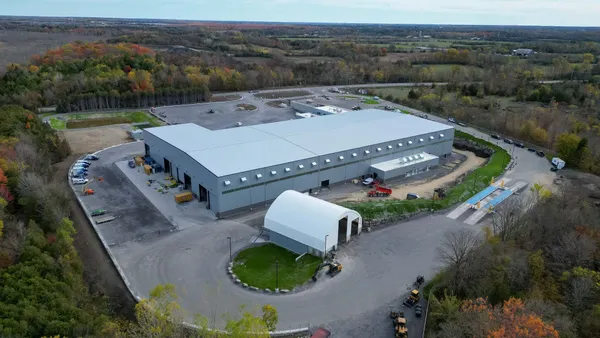Dive Brief:
- Vermont's Agency of Natural Resources (ANR) is asking the state legislature to amend a law requiring that service providers offer organics collection to every resident by 2020. Instead, ANR proposes raising the threshold to multi-family buildings with four or more units and maintaining a blanket commercial requirement.
- This requirement was previously set to take effect in July 2018 but was pushed back to July 2020 last year. Based on a survey, ANR found the majority of service providers prefer this change due to collection inefficiencies inherent in the state's rural nature.
- ANR's request came in a biennial report to the state House and Senate's environmental committees. VTDigger reports legislators had mixed reactions to the request (with one calling it "premature") but remain open to consideration.
Dive Insight:
Multiple companies, including locally-based Casella Waste Systems, have been pushing against this residential requirement for years. They've described it as too expensive for too little return, especially in rural areas. Other companies have insisted it's unfair to change guidelines partway through the implementation, since they've already invested in new equipment.
As a nod to some of these concerns, ANR has also recommended the legislature make amendments to "allow the market to work" by allowing for subcontracting and letting haulers get waivers if they can prove another company is offering sufficient service in the area. Industry reaction to the new proposal, and any potential advocacy around it getting passed, will be a telling sign as the legislative session progresses.
Beyond this notable ask, ANR's biennial report also contains a wealth of information about progress on its 2012 Universal Recycling Law. Once the full food waste ban kicks in next year, Vermont will officially have the broadest organics policy of any state in the country.
So far, ANR is seeing multiple promising signs that these targets are having the desired effect. In 2017, "Vermonters composted more than any time in the last 10 years," and the amount of organic material managed by facilities went up 9% from 2016. Donations to the Vermont Foodbank, the state's largest, nearly tripled between 2014-2017, and continue to increase.
On the infrastructure side, each of the state's 108 transfer stations are complying with requirements to offer drop-off service, and ANR is confident there will be sufficient regional processing capacity to handle all material by 2020. Currently, more material is managed by residents at home — likely via backyard composting or animal feeding, based on one recent University of Vermont study — than at organics processing facilities. ANR believes it will need up to 46,000 tons of new de-packaging, composting and anaerobic digestion capacity by 2020, and is offering state grants to help with those investments.
All of this bodes well for Vermont's ability to meet its goals, but as with any bold recycling plan, it still has the potential to be undercut by consumer behavior and broader economic trends. After declining for multiple years, the amount of landfill disposal actually went up by 11% in 2017.
The detailed report also covered many other areas beyond organics, such as bolstering domestic recycling markets and exploring extended producer responsibility programs for packaging, that could help reverse the trend in a more favorable direction toward ANR's long-term targets. With Vermont now down to just one landfill — likely to get final approval for an expansion, but nonetheless a contentious topic — the pressure is rising from both an economic and regulatory standpoint to continue moving the needle.










